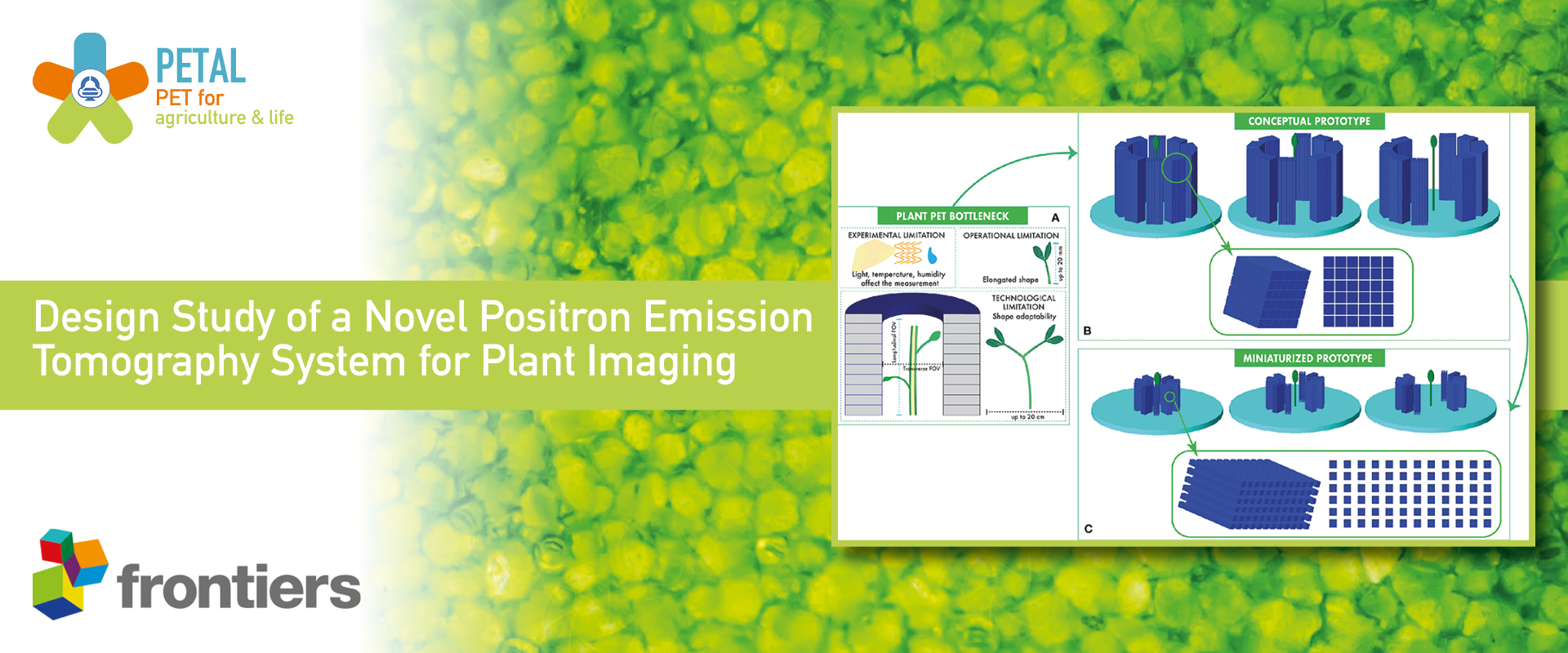- Design Study of a Novel Positron Emission Tomography System for Plant Imaging
- https://www.frontiersin.org/articles/10.3389/fpls.2021.736221/full
Positron Emission Tomography is a non-disruptive and high-sensitive digital imaging technique which allows to measure in-vivo and non invasively the changes of metabolic and transport mechanisms in plants. When it comes to the early assessment of stress-induced alterations of plant functions, plant PET has the potential of a major breakthrough. The development of dedicated plant PET systems faces a series of technological and experimental difficulties, which make conventional clinical and preclinical PET systems not fully suitable to agronomy. First, the functional and metabolic mechanisms of plants depend on environmental conditions, which can be controlled during the experiment if the scanner is transported into the growing chamber. Second, plants need to be imaged vertically, thus requiring a proper Field Of View. Third, the transverse Field of View needs to adapt to the different plant shapes, according to the species and the experimental protocols. In this paper, we perform a simulation study, proposing a novel design of dedicated plant PET scanners specifically conceived to address these agronomic issues. We estimate their expected sensitivity, count rate performance and spatial resolution, and we identify these specific features, which need to be investigated when realizing a plant PET scanner. Finally, we propose a novel approach to the measurement and verification of the performance of plant PET systems, including the design of dedicated plant phantoms, in order to provide a standard evaluation procedure for this emerging digital imaging agronomic technology.

- Kinetically consistent data assimilation for plant PET sparse Time Activity Curve signals
- https://www.frontiersin.org/articles/10.3389/fpls.2022.882382/abstract
Time activity curve (TAC) signal processing in plant positron emission tomography (PET) is a frontier nuclear science technique to bring out the quantitative fluid dynamic (FD) flow parameters of the plant vascular system and generate knowledge on crops and their sustainable management, facing the accelerating global climate change. The sparse space-time sampling of the TAC signal impairs the extraction of the FD variables, which can be determined only as averaged values with existing techniques. A data-driven approach based on a reliable FD model has never been formulated. We propose a novel sparse data assimilation digital signal processing method, with the unique capability of a direct computation of the dynamic evolution of noise correlations between estimated and measured variables, by taking into explicit account the numerical diffusion due to the sparse sampling. The sequential time-stepping procedure estimates the spatial profile of the velocity, the diffusion coefficient and the compartmental exchange rates along the plant stem from the TAC signals. To illustrate the performance of the method, we report an example of the measurement of transport mechanisms in zucchini sprouts.


